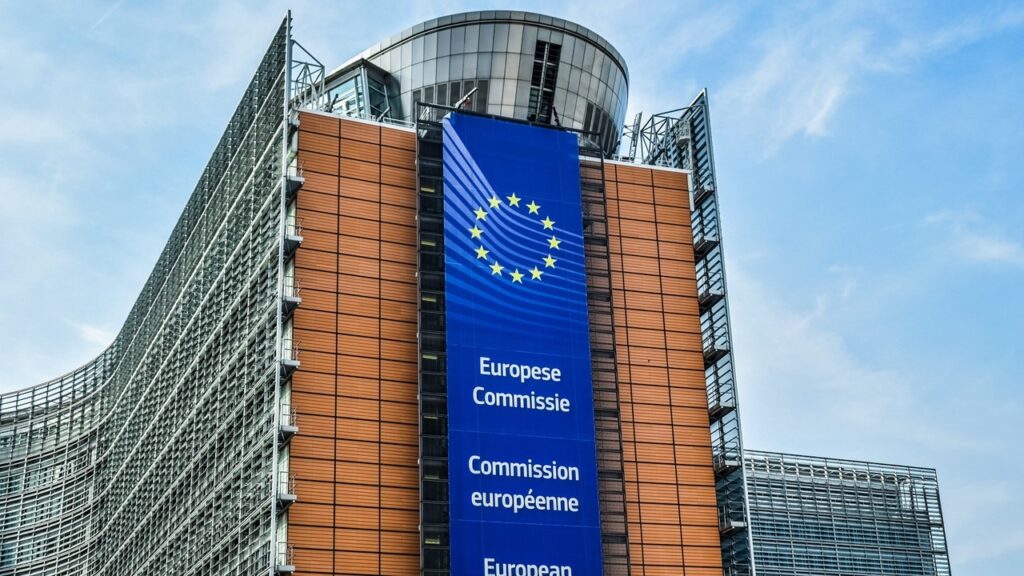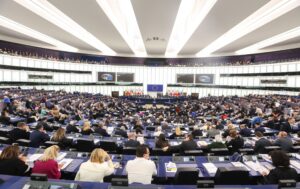In principle, the draft European Packaging and Packaging Waste Regulation (PPWR) represents a viable means to make significant advances in the circular packaging economy within the European single market. Uniform specifications for the design of recyclable packaging will contribute towards creating a level playing field for all stakeholders in the packaging value chain and to the establishment of a genuine secondary raw materials market in Europe.
However, the proposal also contains problematic aspects: key decisions concerning the use of recycled materials, recyclability, and packaging format restrictions, for example, will be moved to the level of delegated and implementing acts and thus placed under the responsibility of the EU Commission, which fails to take account of the necessary involvement of the European Parliament. Moreover, scientific evidence of the assumed environmental benefits is still lacking for some of the proposed measures whilst necessitating a high degree of interference in the decision-making freedom of companies such as the imposition of reuse quotas and packaging bans. Yet such significant decisions ought to be made on the basis of comparative life cycle assessments. The proposal also establishes a number of new reporting and verification requirements, particularly for manufacturers and distributors, the total impact of which would involve a substantial administrative burden for businesses.
The AGVU recommends amendments in the following areas:
Recyclability (Art. 6)
This article creates the legal basis for uniform packaging design requirements in terms of recyclability. This important project has the potential to significantly increase packaging recycling rates. However, the regulations could also result in a high degree of complexity: the proposal provides for a differentiation between 30 packaging materials or categories (Annex II, Table 1); within each category, the requirements are further graded according to five performance classes (A-E Annex II, Table 2). The proposed subdivision into packaging categories is inadequate and should be amended. Plastic, for example, is subdivided into 18 categories, whilst paper and cardboard, for example, are only subdivided into two. This does not reflect the actual diversity of materials. Nevertheless, the requirement for such detailed subdivisions must be critically evaluated and weighed up against the anticipated effort for packaging manufacturers to prepare the required declaration of conformity (Art. 6.8. in conjunction with Annex VII). The digital storage of declarations of conformity should also be permitted.
In order to create legal certainty for manufacturers, it is also necessary to set a specific target date for the submission of the delegated acts relating to the specific design requirements and the specifications for the license fee modulation. Moreover, an institutionalised, transparent process for the elaboration of all delegated acts should be established involving experts from companies in the packaging value chain, for example along the lines of the development of the German “Minimum Standard for Recyclability”. The objective of the design for recycling process should be to achieve a CEN standard for all packaging materials that will ensure the standardisation of the recyclability assessment and take appropriate account of existing design for recycling specifications.
The use of recycled material (Art. 7)
To ensure a uniform understanding of the term recyclate, the text of the regulation should explicitly refer to an internationally recognised standard (for example DIN/ISO 14021:2016(E)). It is not currently possible to meet the planned recycling quotas for non-PET contact-sensitive materials, because no corresponding recycling processes are permitted. Whilst deviations from the quota are permissible in the absence of authorisation for certain technologies (Art. 7.9), they are at the sole discretion of the EU Commission. This Article should be amended to ensure that the quota for non-PET contact sensitive materials would only enter into force if the corresponding recycling processes have been approved by a certain date. If the quota is to be partially met by means of so-called chemical recycling, then the respective technologies must be clearly defined and their prerequisites and conditions specified in detail. At the same time, the Waste Framework Directive should include a provision to the effect that chemical recycling is to be ranked below mechanical recycling in the waste hierarchy. With regard to this, the Packaging and Packaging Waste Regulation ought to stipulate that packaging design should be based on material recyclability rather than chemical recyclability.
The conditions under which the EU Commission would have the right to order deviations from the stipulated recycled material quotas in the event of a lack of availability of recycled materials should be specifically defined (Art. 7.10.). In order for the EU Commission to be able to establish recycling quotas for other materials (Art. 7.11), the text of the regulation should specify the necessary conditions, such as the identification of an inadequate market function for the materials in question.
Art. 7.1 pertains to the calculation of the recyclate content with reference to each individual packaging item. This provision contradicts the requirements for calculating the recycled content of PET bottles in the European Single-Use Plastics Directive, which states that the percentage is to be calculated as the “average of all PET bottles placed on the market within the territory of the Member State concerned” (Art. 5.a EU 2019/904). Any product-based calculation reduces the prospects for efficiency in the procurement and use of recyclates, particularly when suitable recyclates are not available. Another problem is the relatively short period of three years between the publication of the recycled content calculation methodology and the entry into force of the quotas. Consequently, manufacturers should be permitted to calculate the recycled content on a product-by-product basis or as an average of the total quantity of products within the scope of one of the Art. 7 quotas.
Packaging minimisation (Art. 9)
In principle, the proposed approach to packaging minimisation is comprehensible, but the envisaged mandatory requirement for manufacturers to provide proof of conformity for each individual item of packaging is problematic. The effort required to furnish legally secure proof and documentation that packaging cannot be smaller or lighter than it actually is, seems disproportionate, especially for small and medium-sized enterprises.
Standard documentation of packaging minimisation should be dispensed with in favour of the competent authorities being empowered to request evidence from companies on a random basis or in cases of reasonable doubt. This approach would also ensure compliance with the packaging minimisation criteria set out in Annex IV.
Packaging minimisation targets, particularly in relation to food packaging, need to be consistent with other policy initiatives and, among other things, they must take account of those measures being pursued under the Food Contact Materials Regulation and Farm to Fork initiatives aimed at halving food waste at retail outlets and in private households by 2030.
Packaging format prohibitions (Art. 22)
Bans on certain packaging formats require high levels of intervention and not only affect producers but also consumers. Therefore, the prohibitions must be subject to strict rules regarding the necessity of their implementation. The lack of transparency in the draft regulation regarding the selection and assessment criteria of the packaging to be banned, appears problematic. Nor is any scientifically substantiated reference made to any ecological benefits arising from the bans included in the draft.
A consideration of the effect of the packaging bans in the European Single-Use Plastics Directive shows that alternative products are not necessarily more ecologically beneficial. Given the general increase in one- and two-person households and the need to protect food, a ban on small packaging formats would make no ecological sense. A reassessment of the proportionality and the expected environmental effects is also required in relation to the proposed ban on non-compostable single-serve coffee or tea system units that are used and disposed of together with the product (Art. 8.1. in conjunction with Art. 3 (1) (f) and (g)). There is currently no evidence to suggest that compostable products perform better than recycled products in terms of environmental impact. A large percentage of commercial preparation systems cannot be converted to work with compostable single-serving units; up to 140 million perfectly functional coffee and tea machines in EU households would become obsolete and would have to be replaced, which would result in a high additional resource consumption. Art. 8.1. should be amended to the effect that the products in question must either be recyclable or compostable within 24 months of the entry into force of the regulation.
In general, the AGVU recommends the complete removal of packaging bans from the text of the regulation. Packaging resource minimisation can be achieved in a more flexible, efficient and effective way through the use of economic incentive instruments.
Reusability (Art. 23-26)
In certain applications, well-designed reuse systems could contribute to resource and material savings. However, reusable systems do not always translate into ecological benefits compared with single-use systems. Therefore, reuse quotas should be based on appropriate environmental impact assessments, such as LCA (Life Cycle Assessment).
The minimum requirements for reusable systems (Annex VI) should also include criteria that ensure the smallest possible CO2 footprint, for example by minimising transport route lengths for reusable products.
The provisions included in the draft regulation to the effect that packaging for private users should be treated the same as packaging for commercial users are unreasonable and cannot be objectively justified. As is the case for transport packaging, further differentiation is required in this context in terms of the intended use and the goods to be filled. Some of the proposed targets for reusable packaging, particularly for transport packaging, are also too high and are in fact hardly achievable. For instance, Art. 26, para. 12. sets a quota of 100 % just one year after the regulation enters into force. Even with the aid of comprehensive and abrupt changes in corporate processes and at an enormously high cost, it would hardly be possible to implement them.
On the whole, transport packaging, especially plastic films and PPK products, can be recycled very easily. Because the recyclability rate is largely determined by the filling material, a corresponding differentiation is necessary in this respect. Listing “exemplary transport packaging types” should be dispensed with, because some of those expressly mentioned should not be classified as transport packaging according to the definition set out in Art. 3 (4), as they come into direct contact with the contents (“pails” – Article 26.7.; “canisters” – 26.12; “drums” – 26.7., 12 and 13.). Overall, the reuse targets stipulated in the draft regulation should be reviewed in a process in which the companies concerned are consulted with regard to their necessity, feasibility, and financial implications and reduced where necessary.



